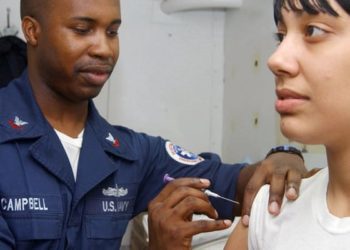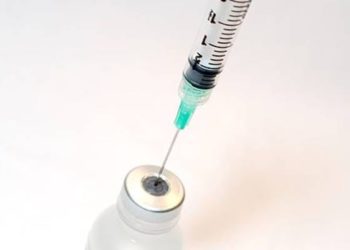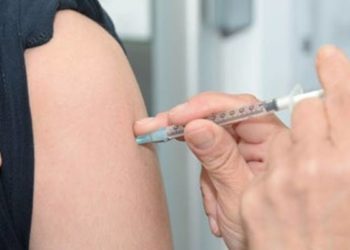Matted nodes linked to higher failure risk in HPV-related oropharyngeal cancer
1. Radiographic evidence of matted nodes was a significant independent predictor for distant failure and case-specific mortality in patients who were treated for oropharyngeal cancer with definitive chemotherapy.
2. Lack of matted nodes was associated with minimal distant failure risk.
Evidence Rating Level: 2 (Good)
Study Rundown: The incidence of human papillomavirus (HPV)-related oropharyngeal cancer (OPC) is rising in the United States. Although HPV-positive OPC has been shown to have favorable prognosis compared to HPV-negative OPC, there still exists a subpopulation of patients who are at increased risk of both locoregional failure and distant failure. Radiographically matted nodes (MNs) are defined as three nodes adjoining one another with radiographic extracapsular spread and have been identified as a poor prognostic factor. This study sought to investigate whether the presence of MNs could be used to stratify patients for treatment failure and patterns of failure. The authors found that patients with matted nodes presented with advanced cancer staging at baseline, compared to those without MNs. Patients with MNs also exhibited a higher incidence of distant failure, case-specific mortality and death. However, locoregional failure was not associated with the presence of MNs. This trend was preserved in subgroup analyses by nodal status and multivariate analysis controlling for HPV-positive OPC risks and other known risk factors. The results may indicate the need for treatment intensification among patients who present with radiographically matted nodes. Major strengths of this study are the large study population and long-term follow-up period. In addition, the study incorporated multiple previously identified risk factors for HPV-positive OPC in the analysis. However, the study is limited by its retrospective nature, which may have resulted in time-related bias for detecting MNs.
Click to read the study in Head and Neck
Relevant Reading: Matted nodes: Poor prognostic marker in oropharyngeal squamous cell carcinoma independent of HPV and EGFR status
In-Depth [retrospective cohort]: A total of 178 patients, who completed definitive chemotherapy for histologically confirmed Stage III/IV HPV-related OPC between July 2003 and December 2010, were included in the study. The median follow-up from the start of therapy was 51.7 months. All the eligible patients had pre-treatment computer tomography (CT) imaging. Pre-treatment imaging was reviewed by either a neuroradiologist alone or in conjunction with a head and neck surgeon or radiation oncologist, who were blinded to the clinical outcome of each patient. Outcome measures included locoregional failure (LRF), distant failure (DF), any failure, cause-specific mortality (CSM) and overall survival (OS). Cox proportional hazards regression models were used for univariate and multivariate analysis to assess the impact of HPV-positive risk group, matted nodes and radiographic extracapsular spread (rECS). There were 30 (16%) patients with MNs. There were no differences between the groups in terms of age, smoking history and use of adjuvant neck dissection. At baseline, the patients with MNs presented with advanced nodal classification (N2b-N3, p<0.001) and rECS (100% vs. 57%, p<0.001). In addition, it was noted that patients with MNs only constituted a minority of patients with advanced nodal classification (7/74 N2b patients, 12/42 N2c patients and 11/25 N3 patients) or rECS (30/115). Overall, patients with MNs exhibited a higher DF (50.0% vs. 1.4%, p<0.001), CSM (56.7% vs. 5.4%, p<0.001) and death from any cause (56.7% vs. 13.5%, p<0.001), respectively. However, there was no difference in LRF between the patients with and without MNs (23.3% vs. 12.8%, p=0.16, respectively). The radiographic existence of MNs was the strongest statistically significant prognostic factor for DF, any failure, CSM and OS when controlled for previously identified risk factors for HPV-positive OPC (T4-classificaiton, N3-classification and ≥10 smoking pack-years).
Image: PD/US Navy
©2015 2 Minute Medicine, Inc. All rights reserved. No works may be reproduced without expressed written consent from 2 Minute Medicine, Inc. Inquire about licensing here. No article should be construed as medical advice and is not intended as such by the authors or by 2 Minute Medicine, Inc.







![Novel combination therapy may be effective for noncirrhotic HCV infection [UNITY-1 trial]](https://www.2minutemedicine.com/wp-content/uploads/2015/05/cirrhosis2-75x75.jpg)